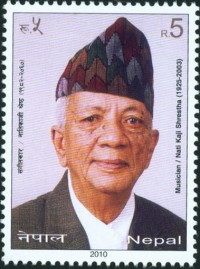The Gurung Community
The Gurung community of Nepal is said to have migrated to the central region of Nepal from Mongolia in the 6th century. Also called Tamu, Gurungs are the indigenous people residing in the mountainous valley of Nepal. Living primarily in northwest Nepal in Gandaki zone, specifically Lamjung, Kaski, Mustang, Dolpa, Tanahu, Gorkha, Parbat and Syangja districts as well as Manag district around the Annapurna mountain range, their ancestors are said to have practiced Bon (shamanism) and later converted to Tibetan Buddhism. Some of them also reside in Baglung, Okhaldhunga and Taplejung districts and Machhapuchhre region with some of them having migrated to West Bengal and Sikkim in India and Bhutan as well.
They have their own language, Tamu Kwei which is considered as a Tibeto-Burman dialect and their ancestors, culture and traditions are traced back to Tibet. Coexisting well with other ethnic groups of Nepal such as Madhesi and Khas, the Gurungs have their own rich and unique culture and tradition. They also have a rich tradition of music and culture and they were the ones to introduce the system of Rodhi, which is similar to modern discotheques where the young meet and share their views in music and dance, in Nepal. Ghatu and Chudka are some musical dances unique to the Gurung culture and are still practiced in some parts of the country where this community resides. The priests in the Gurung community are known as Lamas, Klihbri and Panju and there are the followers of Buddhism as well as Hinduism among the Gurung community.
They have made immense contribution to the history and culture and have demonstrated an unwavering commitment to the world peace and progress. Although most of the Gurung lives in Nepal as one of the ethnic groups of this multi-ethnic country, Gurungs have also served the world as the brave Gurkha soldiers. There are two types of Gurungs residing in Nepal, highlanders and lowlanders, although Gurungs are principally highlanders. Relying heavily on a pastoral and agricultural way of life, the highlanders living on the slopes of Himalayas grow rice, wheat, maize, millet and potatoes usually on terraced mountain slopes. Also, sheep breeding for wool and meat is a source of subsistence for them. However, in present context, most of the Gurung families are also financed by the pensions and salaries of family members who are in the army.





